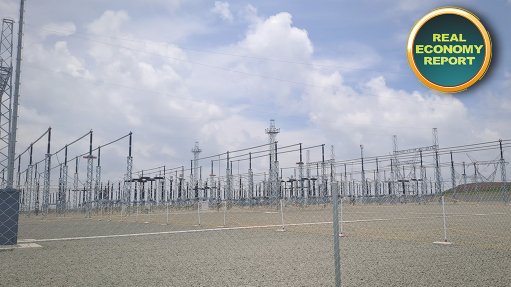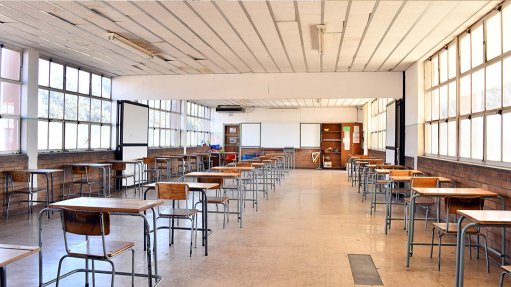An obscure profession
Some may know that I trade as an acoustics engineer, not a ‘sound engineer’. As I recently reminded an attorney, the ‘sound engineer’ chews gum, has piercings and tattoos, wears dark glasses at night and operates a sound-mixing desk in a theatre. An acoustics engineer designs the acoustics and noise control of the theatre.
To become an acoustics engineer, it is necessary to get a degree in engineering. It can be in mechanical engineering, mechatronic engineering, chemical engineering, electrical engineering (preferably, but I am biased) and generally not civil engineering. As far as I know, it is not possible to do a degree in acoustics engineering in South Africa and, as far I can find out, there are no undergraduate courses in acoustics.
Thus, to become an acoustics engineer, you have to join an existing acoustic practice and work your way up. The downside of this is that acoustics is like the opposite sex – seemingly simple but it can be hellishly complicated. At first appreciation it is simple: you load an app onto your cellphone, which turns it into a sound-level meter. Now you can measure sound. Cheap and simple. Well, so is the result – at mid-frequency, the accuracy is +-2 dB of reference, but at low and high frequencies it is worse than this. Certainly not good enough for scientific or engineering measurements. Or any legal applications. So, you cough up R130 000 and buy an accurate Type 1 sound-level meter. Now you can measure sound. Right? Well . . . you are measuring something, but what is it? Is it the noise and a reflection off a wall? Is it one noise and another occurring together? Is it corrected for impulsiveness, tonal character or night-time exposure? If it is impulsive, is it ‘high-energy impulsive’ or ‘highly impulsive’ or ‘impulsive’?
As you can see, it gets complicated quickly. But to be frank, it gets way more complicated than this. Apart from sound measurements (generally required to find out if the law is being contravened, as in the case of generators, fans, heating, ventilation, and air-conditioning units, nightclubs, outdoor events and so on) there is the matter of designing rooms, theatres, classrooms and halls for good acoustics and the matter of designing systems for noise control. The design of rooms, theatres et cetera is not too difficult (it can be tedious) and provided the client installs what you specify, the results are good.
But Oh! There’s the nub. Often, the architect has a vision: the vision is to build a modern version of Frank Lloyd Wright’s building, Falling Waters. The vision is glass. And polished marble. And off-shutter concrete. When built, it is truly beautiful. Unfortunately, it has the acoustic properties of a squash court in a parking garage. Then whatever the acoustics engineer (not originally appointed but now appointed on an urgent basis) suggests as some finish which will improve the acoustics gets tossed aside by the architect on the basis of architecture or by the quantity surveyor on the basis of cost or by the client on the basis of whatever. Finally, some finish is agreed. The quantity surveyor whittles it down to meet the budget and the architect modifies it until it has no acoustics properties. The building is a fail, as all those who work in it find out.
Systems for noise control are equally frustrating. If installed as the acoustics engineer specifies, it will work. But here the quantity surveyor and the contractor consort to make this not happen. The contractor convinces that an alternative acoustics cladding which is cheaper will work. We disagree and it is installed anyway. It doesn’t work.
And into this all there are the unqualified self-appointed ‘experts’ who give advice, which costs a lot and is hopeless.
The short message: if you want good noise measurements, good acoustics and noise control, employ qualified people with good instruments and do as they say. You won’t be sorry. Don’t do this and you will be.
Article Enquiry
Email Article
Save Article
Feedback
To advertise email advertising@creamermedia.co.za or click here
Comments
Press Office
Announcements
What's On
Subscribe to improve your user experience...
Option 1 (equivalent of R125 a month):
Receive a weekly copy of Creamer Media's Engineering News & Mining Weekly magazine
(print copy for those in South Africa and e-magazine for those outside of South Africa)
Receive daily email newsletters
Access to full search results
Access archive of magazine back copies
Access to Projects in Progress
Access to ONE Research Report of your choice in PDF format
Option 2 (equivalent of R375 a month):
All benefits from Option 1
PLUS
Access to Creamer Media's Research Channel Africa for ALL Research Reports, in PDF format, on various industrial and mining sectors
including Electricity; Water; Energy Transition; Hydrogen; Roads, Rail and Ports; Coal; Gold; Platinum; Battery Metals; etc.
Already a subscriber?
Forgotten your password?
Receive weekly copy of Creamer Media's Engineering News & Mining Weekly magazine (print copy for those in South Africa and e-magazine for those outside of South Africa)
➕
Recieve daily email newsletters
➕
Access to full search results
➕
Access archive of magazine back copies
➕
Access to Projects in Progress
➕
Access to ONE Research Report of your choice in PDF format
RESEARCH CHANNEL AFRICA
R4500 (equivalent of R375 a month)
SUBSCRIBEAll benefits from Option 1
➕
Access to Creamer Media's Research Channel Africa for ALL Research Reports on various industrial and mining sectors, in PDF format, including on:
Electricity
➕
Water
➕
Energy Transition
➕
Hydrogen
➕
Roads, Rail and Ports
➕
Coal
➕
Gold
➕
Platinum
➕
Battery Metals
➕
etc.
Receive all benefits from Option 1 or Option 2 delivered to numerous people at your company
➕
Multiple User names and Passwords for simultaneous log-ins
➕
Intranet integration access to all in your organisation

















